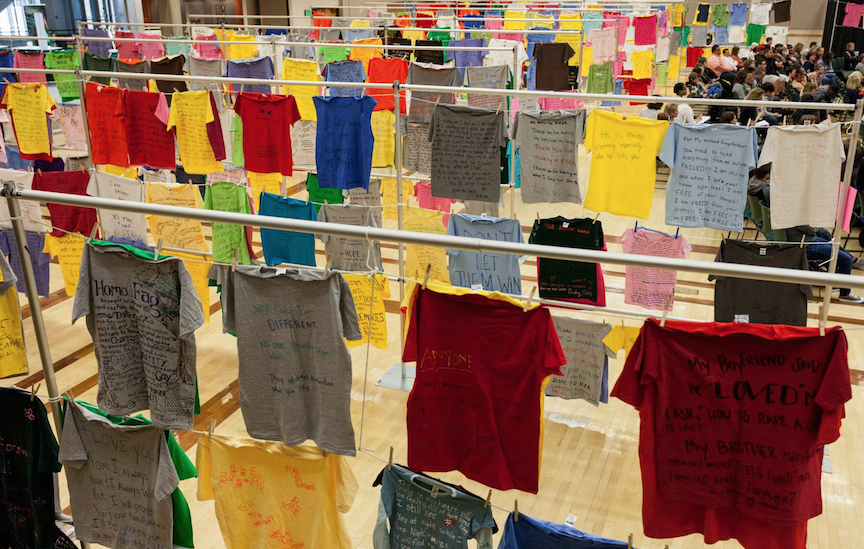 University Marketing & Communications: Layton Shumway | 801-863-6863 | [email protected]
University Marketing & Communications: Layton Shumway | 801-863-6863 | [email protected]
Written by: Barbara Christiansen | 801-863-8208 | [email protected]
It’s almost impossible to go anywhere without seeing someone with a message written on a T-shirt. In many cases, the writing is humorous. Sometimes it is an advertising message. Occasionally, messages can be heart-wrenching. That’s the case with the Clothesline Project, to be held in the Grande Ballroom of Utah Valley University from 8 a.m. to 8 p.m. Oct. 24 and 8 a.m. to 5 p.m. on Oct. 25.
Held on campus since 1998, the project includes displays of T-shirts with messages written by survivors of various types of abuse, or in honor of victims, some of whom died as a result of abuse.
Those who attend the free event may walk through a display of the T-shirts, all created by individuals in Utah County. The messages vary, but are poignant. Some reflect despondency. Others offer hope and resilience. Healing may be enhanced by expressing feelings through creating a new T-shirt to be displayed in the future. The messages offer a means of expression that can be anonymous.
The colors of the shirts indicate the type of violence that occurred. White is for someone who died as the result of violence. Red, pink and orange are for survivors of rape or sexual assault. Blue and green are for survivors of incest or childhood sexual abuse. Purple indicates survivors of attacks due to perceived sexual orientation. Brown and gray are for survivors of emotional, spiritual or verbal abuse. Black shows someone who has been disabled as the result of an attack or who was assaulted because of a disability.
While the shirts, their colors and their messages have a marked emotional impact, other senses heighten those feelings.
“A gong will ring every 10 to 12 seconds,” said Summer Valente, director of Volunteer & Service Learning at UVU, which is putting on the display this year. “This is for how often someone is being battered. A whistle is for reported rapes. That happens every minute of every day. Those are incredibly under-reported. A bell represents someone who is killed in a violent attack. That happens three or four times each day.”
“It is a real sensory experience,” she said. “You are hearing, seeing, feeling the pain of these people. It is not just women. Men and children, too, are abused.”
Too often, those who are abused are without a voice. “The Voiceless” is the title of a documentary film that will be shown, along with a panel discussion, from 5-9 p.m. on Tuesday. It will be in room 120 of the Fulton Library on the UVU campus.
On Wednesday, Marty Liccardo will present “Bystander Training,” designed to help anyone who witnesses abuse or potential abuse to intervene or get help to prevent or minimize the problems. It is from 1-2 p.m. in the Grande Ballroom.
Liccardo has worked with the Utah Coalition Against Sexual Assault, been a member of the Rape Recovery Center’s hospital response team, and held positions at Duke University doing similar work. He is currently working with numerous organizations in Utah, including his own, the Men’s Antiviolence Network (MAN).
###

